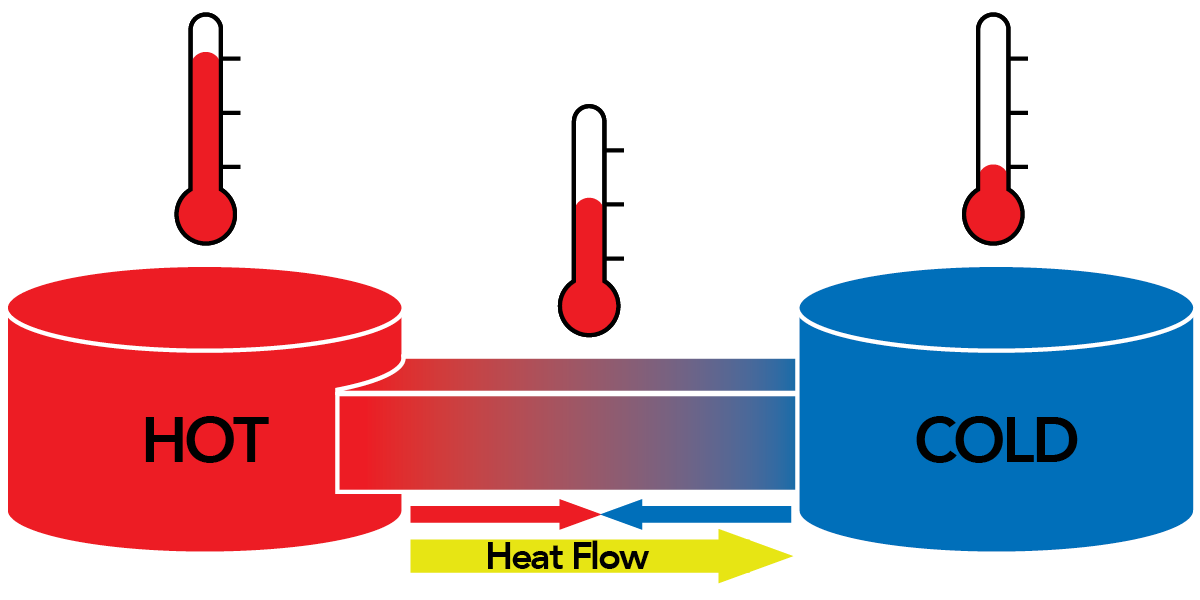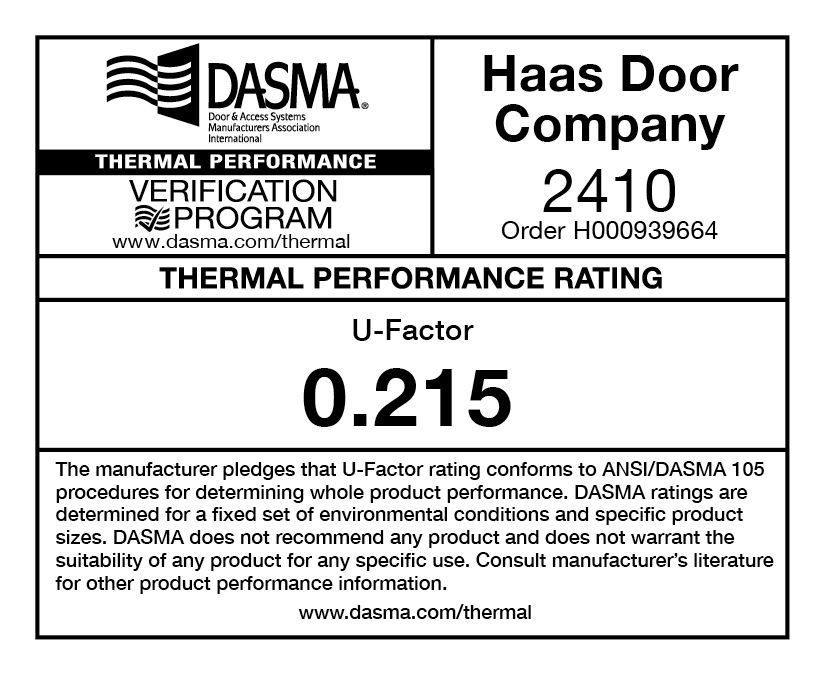Thermal Performance
What is U-Factor?
The tested U-Factor is the measurement of heat (energy) transfer from warmer side to colder side of the garage door (in our case). Heat transfer is not desired because it means the loss of energy from conditioned spaces.
A lower U-Factor indicates less heat transfer and better thermal performance.
It is the preferred method for building codes thermal performance, and architects use U-Factors to calculate building envelope energy loads. U-Factor tests the whole, installed assembly. Energy Star Fenestration products and knowledgeable professionals recognize and use U-Factor.

Without insulation or thermal break to stop it, energy will transfer through the door.
Who is requesting this industry standard?
Door & Access Systems Manufacturers Association (DASMA) has setup a verification program to provide industry wide standardization of marketing the thermal performance of sectional garage doors. This program represents a shift in how sectional garage doors thermal performance is rated, from traditional R-Value to more accurate and relevant third party tested door assembly U-Factor.
DASMA and the program participants agree to increased consistency, and transparency by sharing tested data, allowing customers to product quality facts. More detailed information about the program and U-Factors are available at www.dasma.com/thermal.

Why is a tested U-Factor better than R-Value?
U-Factor
- U-Factor tests the whole installed assembly which includes section joint, lites, stile attachment, etc. - more relevant to thermal performance
- Third party tested and validated by the program administrator
- All manufacturers using the same testing methods ANSI/DASMA 105
- Tests measure the actual heat/energy transfer
- All manufacturer results will be a direct comparison to one another
R-Value
- Only one section is calculated and provides the insulating effect through the “center” of a door section only, not the entire door
- Independently calculated by each manufacturer - not validated
- No testing standard resulting in a wide interpretation of the calculation
- Calculates the resistance to thermal transfer
How does this benefit you?
This shift to tested U-Factor measurements sets a standard all manufacturers in the program ahere to. Tested products included in the program must be submitted to the program administrator. Only tested products in the program can list U-Factor data. This is the most reliable thermal performance indicator in the industry. Manufacturers in the program are stepping forward and formally having their products tested to prove quality.
Comparison of products between manufacturers has never been easier or more accurate. All tested products are required to be labeled with DASMA thermal performance verification displaying testing results. For accurate data and product comparison, choose products that have been tested through this program.
Establishing the standard testing procedure, and having a third party accredited lab perform and record the testing data provides consistency across the industry. Special guidelines have been put in place to properly market the U-Factor information as well. This removes any possible confusion from one manufacturer to another.
320 Sycamore, Wauseon, OH
320 Sycamore, Wauseon, OH










